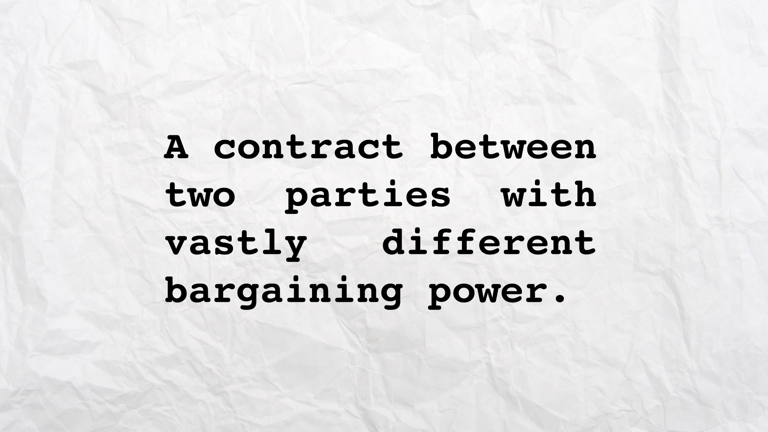Ungluing “Contracts of Adhesion”
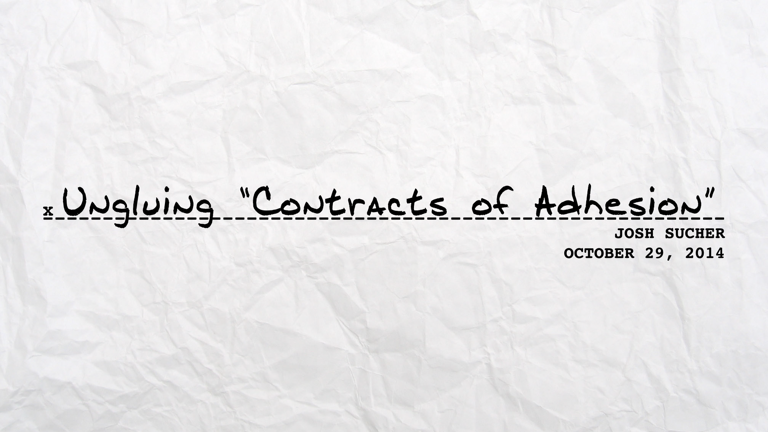
I gave a presentation on contracts of adhesion last night, as the final project for my Introduction to Cybernetics and the Foundations of Systems Design course at SVA IxD. Here it is!
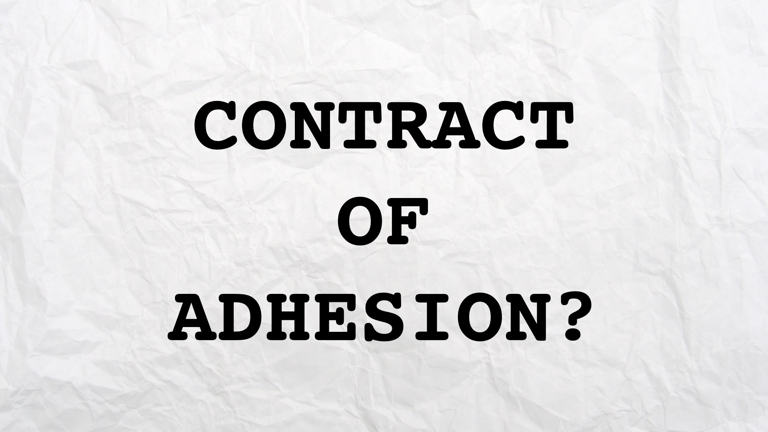
So… what’s a contract of adhesion?
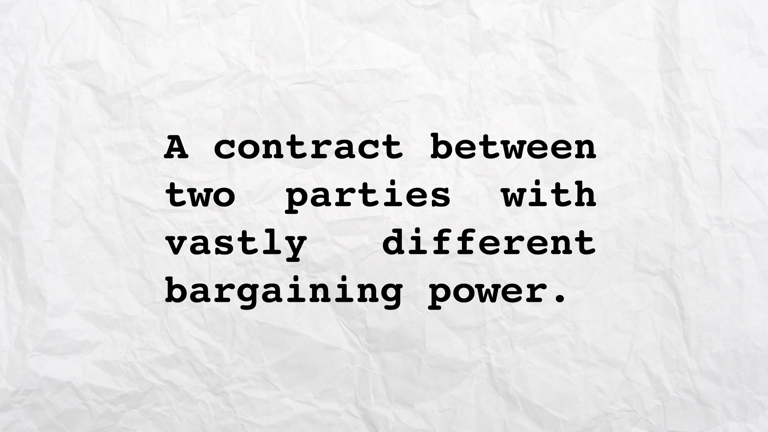
In brief, it’s a contract in which one party dictates all the terms, and the other party has absolutely no power to negotiate. It might be a foreign term, but we come across the concept all the time.
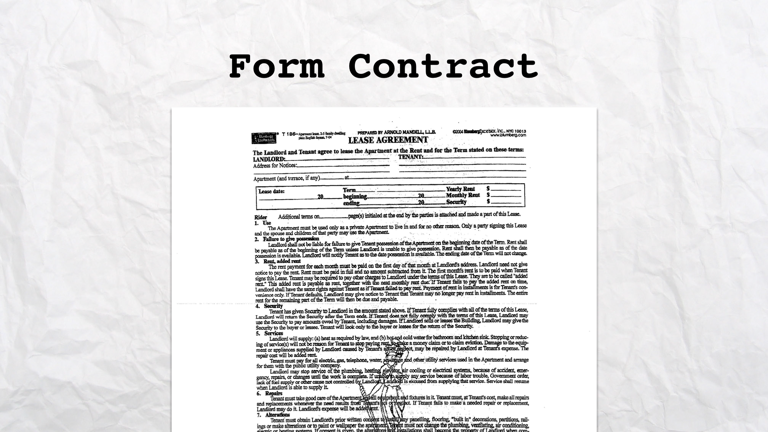
In leases, for instance. Most of us have signed exactly this lease, and had zero ability to edit it. (This over-xeroxed copy was provided by my broker when we rented our apartment a couple months ago. He was surprised that I even wanted to read it.)
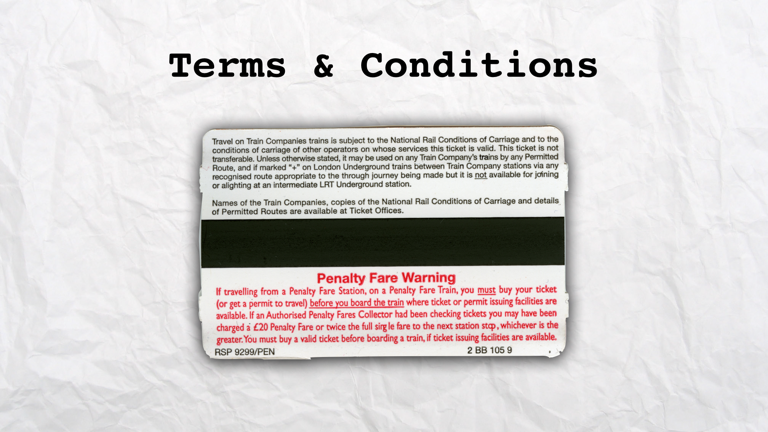
Or, on the back of event or transportation tickets. We’re bound by this agreement, yet we have no idea it exists.
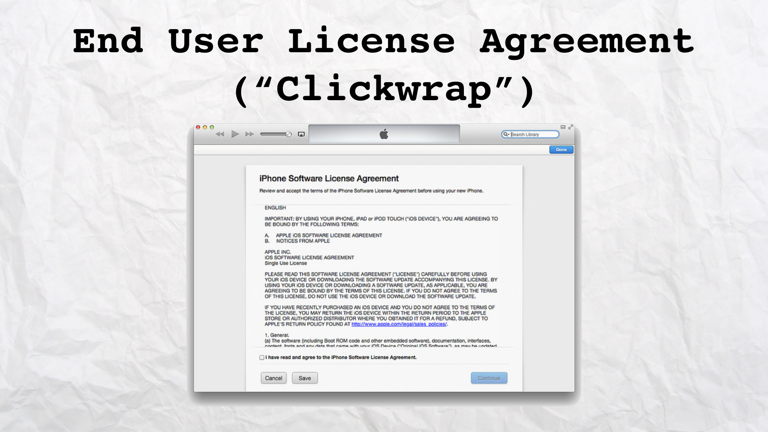
Or, of course, in the infamous EULA. This is what I’m going to focus on. We’re all familiar with this screenshot — a long, read-only document filled with legalese in small capital letters, and there on the bottom? A juicy little checkbox. All we have to do is click it, and we’re on our way. This is the problem!
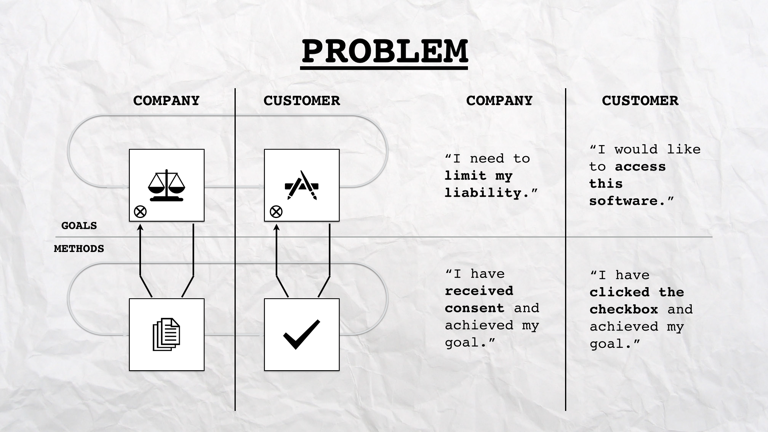
Here’s a cybernetic representation of the problem. Essentially, the company and the customer are having two completely distinct dialogs, running in parallel. The company wants to limit its liability, and it uses a contract to do so. The customer just wants to access the app, and it uses the checkbox to do so. The contract seldom enters the customer’s equation.
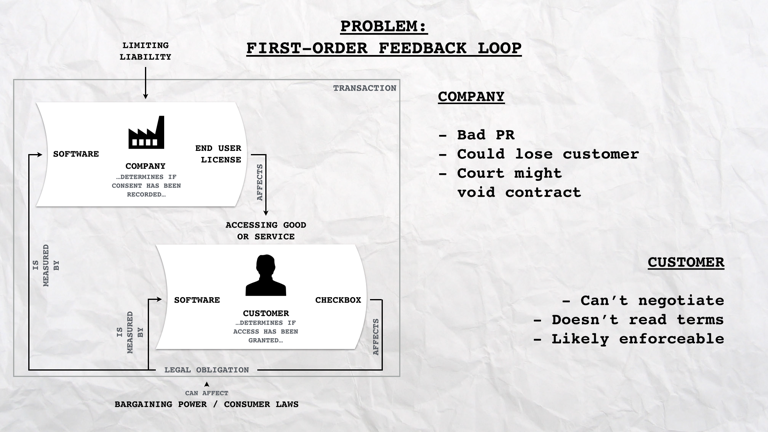
Another way to look at this is as a first-order feedback loop. A traditional example of this model is a person using a thermostat. The person, represented as the outside loop, sets the temperature, and the thermostat, represented as the inner loop, turns the heating/cooling element on/off in an effort to reach that temperature. But the thermostat — unless it’s a Nest — has no agency over the outer goal. Similarly, here, the customer has no agency over the end user license agreement. The company sets the terms.
And this sucks. We all know why it sucks for customers — you can’t negotiate the agreement, probably won’t read it, and are likely bound by it. I would argue it sucks for companies as well. It can be a toxic PR nightmare when one of your customers finally reads the contract and realizes its terms. And if a court gets involved, it could decide that there’s an unconscionable term, and it could void the whole contract as a result.
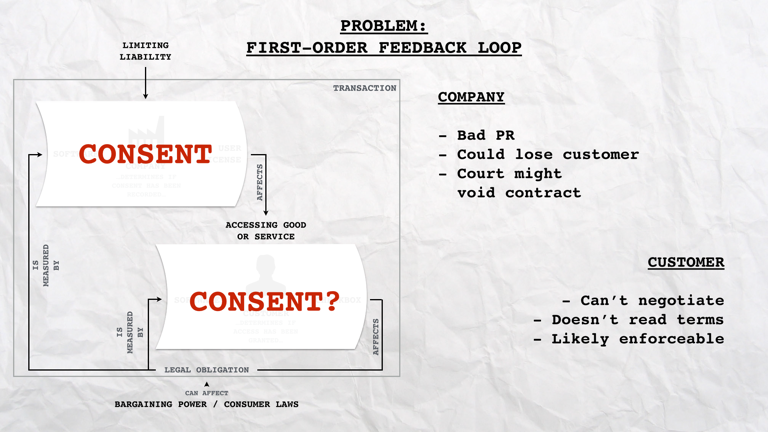
The problem comes down to consent. The company wants it, but I’m not convinced the customer can ever give it in a meaningful way, since the customer is just trying to access the software, rather than trying to commit to sign a contract. So how do we solve this?
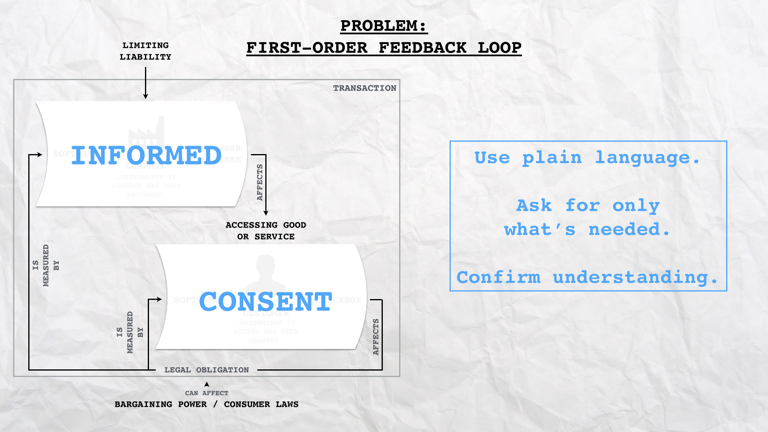
Well, if we have consent, what are we missing? Information. I propose that we completely change the way we think about contracts. Rather than imagine them as big, monolithic documents, we could break them up into a rolling series of smaller agreements, each following three simple principles:
1) Use plain language. 2) Ask for what you need, and nothing more. 3) Confirm that the other party actually understands what they’re agreeing to!
But we still have a problem: this model is no longer sufficient for our needs. The customer still has no agency. So what do we do now?
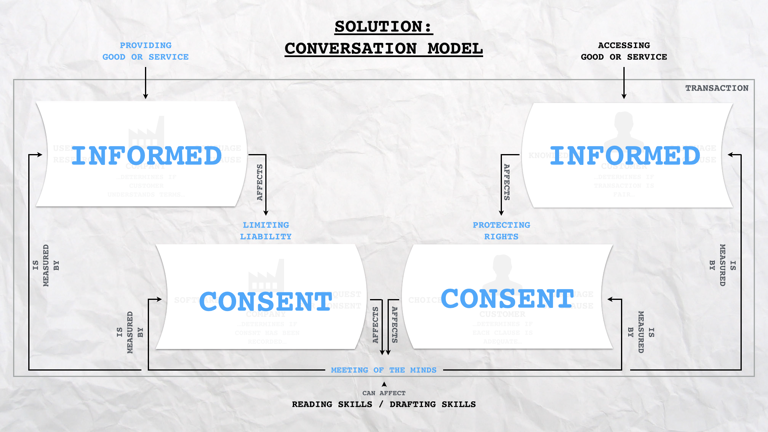
We shift to a conversation model! Now, we’ve raised the customer to the level of the company, and we’ve got informed consent on both ends. The company and the customer share the goal of transacting at the upper level, and share the goal of protecting themselves on the lower level.
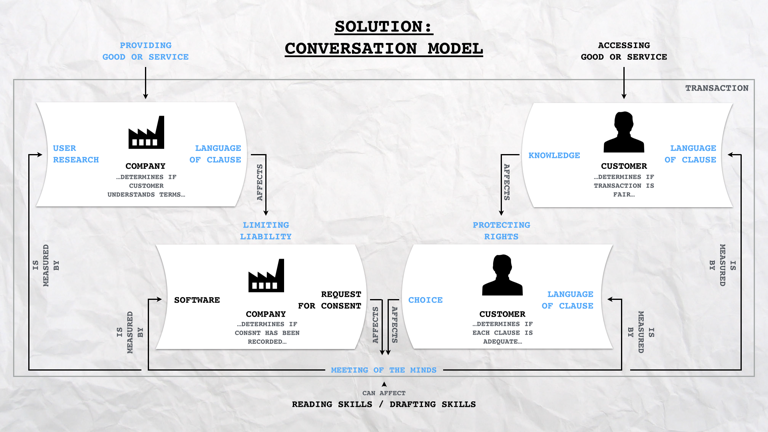
Here’s what it looks like in detail. The primary lever in use by the company is language, now. And the primary lever used by the customer is knowledge. On the upper level, information. On the lower level, we’re still making that contractual commitment. And the environment has shifted, too — we’re now trying to achieve a meeting of the minds, rather than focusing on the legal obligation.
After all, that’s what a contract is all about! It’s not supposed to be adversarial!
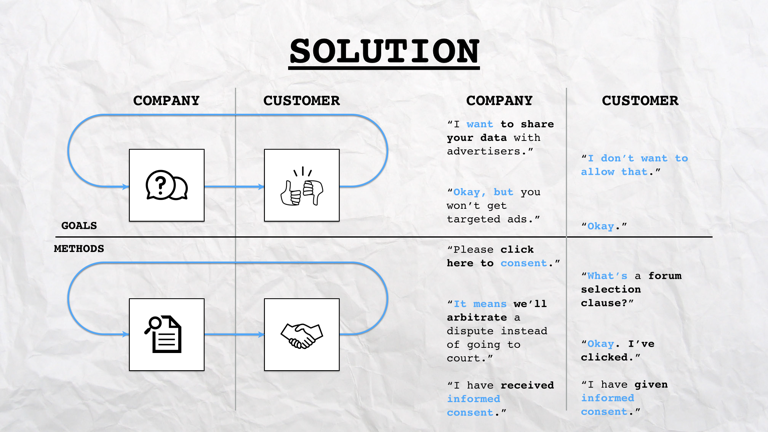
Here’s what it looks like in our other model. Now, the company and the customer are collaborating on the goals level, above, and the methods level, below. On the goals level, the company asks for something, the customer says no, the company explains the consequences, and the customer expresses understanding. Information! So we shift to the document. On the lower level, the company asks the customer to click the checkbox, the customer expresses his or her confusion, the company explains the term, and the customer clicks to agree. Consent!
So, what would this look like in the real world? Well, it turns out we see it all the time.
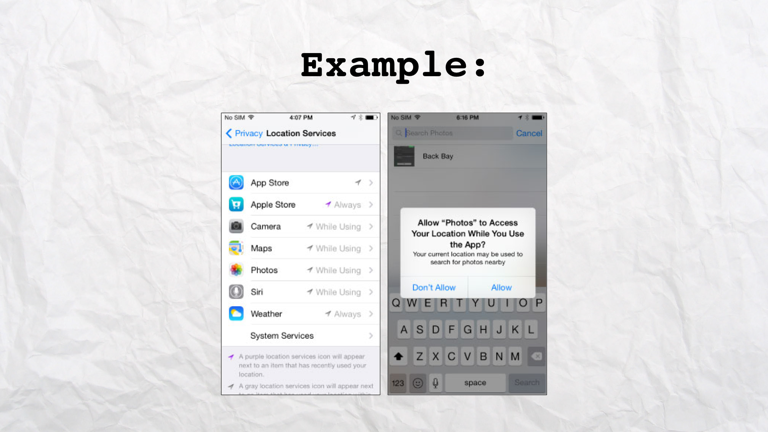
It would look a whole lot like this Photos app request for permission to use your geolocation data. It sure looks like a contract! It has offer, acceptance, and consideration! It doesn’t have to be more complicated than this.
So, what company in their right mind would do something like this? Well, maybe it’s a matter of public policy. Maybe it would call for legislative intervention. But…
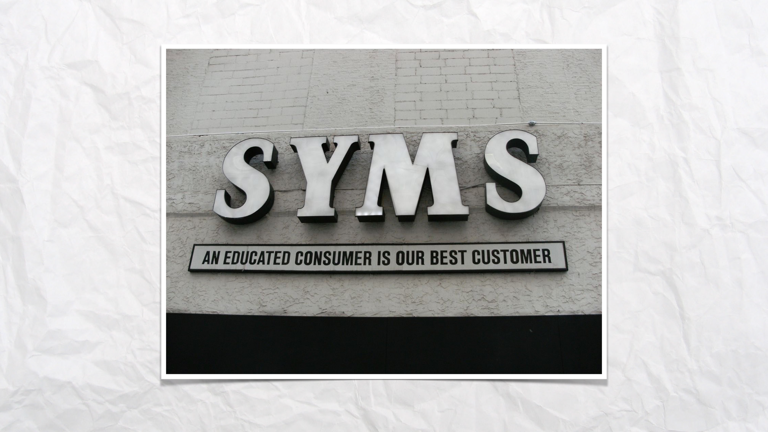
…maybe, just maybe, we’ll find a company that subscribes to the Sy Syms school of thought, and values transparency in its dealings. We’ll just have to wait and see.

Thank you! (PS: I booked this Breather space on Broadway to rehearse for my presentation, and it was awesome. You and I can both earn a free hour if you sign up using this link or my code: LE3R5A.)

